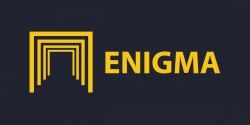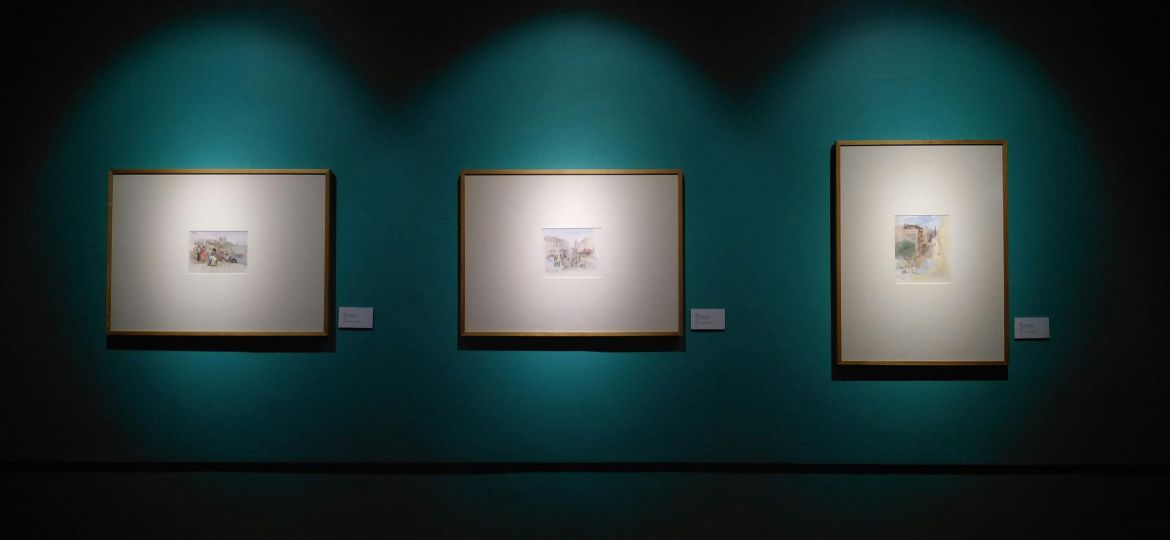- tangible (castles, museums, works of art)
- intangible (songs, traditions, etc.)
- digital (born-digital and digitized)
These invaluable possessions not only contribute to the identity and customs of European communities but are also acknowledged as an integral part of their cultural heritage, warranting legal and traditional protection [2].
Cultural data can be anything from digital representations of ancient documents, artefacts and environments of virtual worlds. So, they have to been defined by the concepts and methods of how is represented in digital form, managed, analyzed and communicated.
Sharing Cultural Heritage data involves making information about cultural artifacts, artworks, historical documents, traditional practices and historical sites accessible to a wider audience. Numerous digital platforms, databases, museums, educational initiatives, digital platforms and programs can be used for this kind of sharing. The following aspects should be considered while sharing Cultural Heritage data:
Cultural property holds a distinct value, serving as a gateway to understanding the human history and the richness of various cultures
Data related to Cultural Heritage can be stored and retrieved with the creation of digital archives and databases. Digital libraries, websites and online databases are a few examples of these platforms.
Europeana, the European digital cultural platform, is at the basis for building the common data space for cultural heritage by allowing museums, galleries, libraries and archives across Europe to share and reuse the digitized Cultural Heritage images such as 3D models of historical sites and high quality scans of paintings. Europeana currently offers access to 52 million cultural heritage assets, 45% of which can be reused in various sectors. Images and text make up 97.5% of Europeana’s assets, with only 2.47% audiovisual content and 0.03% in 3D [3].
Alongside this, the European Collaborative Cloud on Cultural Heritage (ECCCH) is a European Union initiative for a digital infrastructure that will connect Cultural Heritage institutions and professionals across the European Union. It is intended to help protect European Cultural Heritage while answering to the new requirements of a digitized world. In doing that, it will provide practical benefits to all Cultural Heritage professionals and museums, developing specific digital collaborative tools for the sector while removing barriers for smaller and remote institutions. The goal is to help Cultural Heritage institutions, research organizations and other professionals of all sizes and types work with their digital objects in a more visible, interconnected, harmonized, and informed way, allowing them to successfully cope with the challenges the digital transition poses to the sector [3].
Cultural Heritage content presents a special situation with regard to Open Access in that most content is in the Public Domain (i.e. the copyright has expired) and curated by publicly funded institutions. The title of a recent anthology of papers on openness and sharing of cultural heritage content, “Sharing is Caring” (Sanderhoff 2014) summarizes very well what open access means in this domain: to take care that cultural heritage is preserved, made accessible, appreciated and shared as wide as possible [4].
Open data has the potential to revolutionize the way Cultural Heritage institutions share their data. By making data openly available, Cultural Heritage organizations can increase public access to their collections, promote collaboration and innovation, and contribute to the preservation of Cultural Heritage. By making data freely available, Cultural Heritage institutions can (I) Increase public access to their collections, (II) Facilitate research and education, (III) Promote collaboration and innovation, (IV) Enhance transparency and accountability and (V) Contribute to the preservation of Cultural Heritage [5].
Open Cultural Data consists of digitized material from cultural institutions that can be re-used to develop, among others: learning and educational content, documentaries, animations and design tools. However, re-use of data is only possible if the digitized data is ‘open’, which means that end users can re-use and further distribute the data. To re-use cultural data, the material must be I) digitized (published online) and II) open (data that can be freely used, re-used and redistributed by anyone) [6] .
The choice to make public data accessible and reusable is part of a search for better sharing and greater dissemination of information [7]. While data is being saved in unstructured databases all over the web, linking data is a way of map and interlink various data [8]. Linked Open Data is a way of publishing structured data that allows their metadata to be connected and enriched, between resources so that different representations of the same content can be found, and links made between related resources, same way The Web function [9].
Essentially, metadata is data that describes other data to increase its usefulness and meaning. Cultural Heritage institutions often use metadata to assist in the preservation and management of digital collections. For example, a digitized photograph (data) might have an associated title, description, and date (metadata). If this metadata did not exist, the photograph would have less meaning; a person viewing the photograph would not know who was in the photo, why it was taken, or what it showed. Without metadata, items within cultural heritage or special collections would be less discoverable, less protected, and less valuable to researchers [10].
Metadata is an integral part of the successful preservation of digital collections. As well as providing an item’s description or context, metadata can also document file format, file structure, and file fixity. The more quality technical metadata that is included, the better the item will be preserved and accessible in the future. Modern digital preservation tools allow this kind of metadata to be updated throughout the item’s lifecycle [10].
Community participation (involve local communities in the process of documenting and sharing cultural heritage data) is an essential issue within Cultural Heritage management and effective community participation is a process that is vital to enhance long-term sustainable Cultural Heritage management. This can contribute to a more accurate representation of cultural practices and traditions. Furthermore, with the approval of the UNESCO Recommendation on the Historic Urban Landscape, community participation is recognized as a fundamental tool in Cultural Heritage management practices. This recommendation seeks to involve public participation, in order to, among other aims, mediate conflicts between stakeholders, including residents, visitors, developers, experts and governments. Moreover, the Operational Guidelines for the Implementation of the UNESCO World Heritage Convention have emphasized the importance of the participation of a variety of stakeholders in Cultural Heritage identification, protection and preservation as a worldwide strategic policy. These guidelines attempt to ensure that local communities’ needs are included and not solely the interests of experts or governments [11].
Safeguarding of Cultural Heritage includes important and vital knowledge which requires a robust framework to protect sensitive Cultural Heritage data (copyright issues etc.). Ethical considerations in safeguarding Cultural Heritage data are about building universally accepted norms of acceptable conduct for all those involved from a human or cultural perspective [12].
More specifically, Ethics refers to norms of conduct regarding acceptable and unacceptable behaviors within a society or community – not necessarily from a legal perspective, but from a human or cultural perspective. Much of the discussion and literature on ethics in Cultural Heritage safeguarding relates to situations where non-community members carrying out research or data collection encounter problematic issues relating to disrespect, exploitation or misrepresentations arising from their work. Ethical concerns are, however, not restricted to the role of outsiders and concern all involved in safeguarding activities [12].
The Cultural Heritage sector has traditionally been concerned with sharing resources and furthering human knowledge. As these goals appear to align with those of linked data, it follows that this technology could be of great use to those working in the Cultural Heritage sector. These technologies may also be of particular interest to the Cultural Heritage sector as the issue of interoperability of metadata between institutions has been noted as a focus in this sector. Linked data holds the potential to improve interoperability and information sharing in the Cultural Heritage sector, and there is already much being done to create standards and platforms to realize this potential (standardized documentation practices to enhance interoperability and facilitate collaboration among institutions). A number of studies published in recent years have applied the method of systematic literature review to study linked data applications [13].
The sharing of Cultural Heritage data needs to be guided by the values of inclusivity, tolerance for differing viewpoints and perspectives and a dedication to safeguarding the wealth of human history for the present and the future.
The ENIGMA project takes into consideration all the mentioned data sources, communication issues and copyright and ethical considerations. It will leverage the available data sources and utilize them during the development of the platform in order to be able to find similarities between a given cultural good and artifacts registered in CH databases. Another aspect that ENIGMA will tackle is to solve the interoperability issues between different databases and metadata schemas in order to be able to use an much information as possible. Finally through the development of federated modules ENIGMA will address the copyright and ethical considerations regarding Cultural Goods.
References and resources
[1] European Commission, Cultural heritage.
https://culture.ec.europa.eu/cultural-heritage
[2] European Commission, Combatting trafficking in cultural goods.
[3] Davies, Rob, Europe’s Common Data Space for Cultural Heritage, HERITΛGE, 2023.
https://heritagemanagement.org/european-data-space/
[4] CreativeCH Project Website, Open Access to cultural heritage content.
https://creativech-toolkit.salzburgresearch.at/open-access-to-cultural-heritage-content/
[5] Chiotis, Chris G., The Future of Open Data in Cultural Heritage, Series: Cultural Heritage, 2023.
https://chiotis.eu/the-future-of-open-data-in-cultural-heritage/
[6] European Union, Cultural institutions and cultural Open Data, 2018.
https://data.europa.eu/en/publications/datastories/cultural-institutions-and-cultural-open-data
[7] Ministère de la Culture, Open and reuse data (Open Data).
[8] European Union, Linking data: what does it mean?, 2022
https://data.europa.eu/en/publications/datastories/linking-data-what-does-it-mean
[9] Europeana Foundation, Linked Open Data, 2017.
https://pro.europeana.eu/page/linked-open-data
[10] Recollect, Metadata and cultural heritage collections.
https://www.recollectcms.com/metadata-and-cultural-heritage-collections/
[11] Li, Ji, Krishnamurthy, Sukanya, Roders, Pereira, Wesemael, Pieter van, Community participation in cultural heritage management: A systematic literature review comparing Chinese and international practices, Cities, Volume 96, 2020.
https://www.sciencedirect.com/science/article/pii/S0264275119305025
[12] Chiweshe, Manase Kudzai, Ethics in the context of Intangible Cultural Heritage Safeguarding, Southern African Intangible Cultural Heritage Platform, 2019.
https://ich.unesco.org/en/ethics-and-ich-00866
[13] Davis, Edie, Heravi, Bahareh, Linked Data and Cultural Heritage: A Systematic Review of Participation, Collaboration, and Motivation, Journal on Computing and Cultural Heritage, Vol. 14, No. 2, Article 21, 2021.



